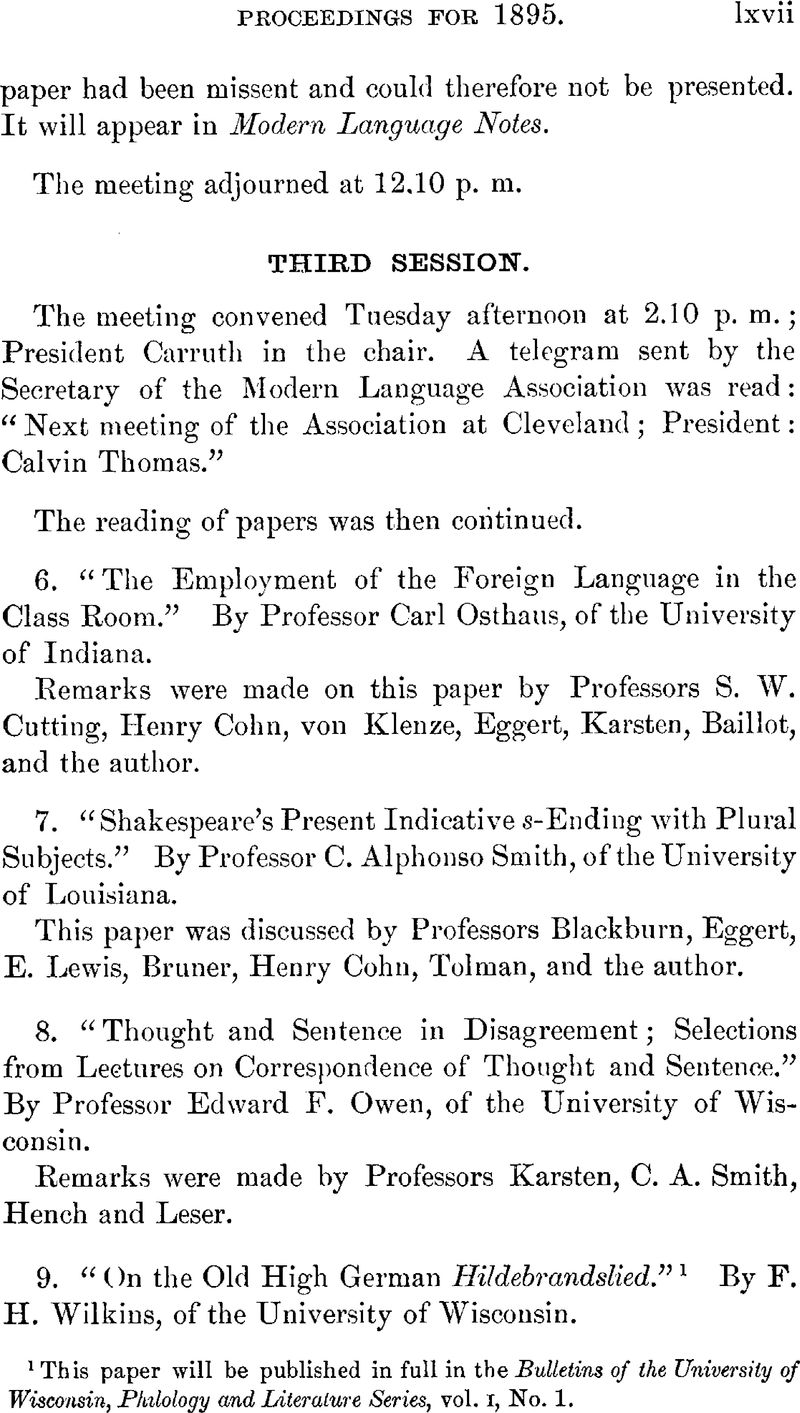No CrossRef data available.
Article contents
Third Session
Published online by Cambridge University Press: 02 December 2020
Abstract

- Type
- The Central Division of the Modern Language Association of America
- Information
- Copyright
- Copyright © Modern Language Association of America, 1896
References
page lxvii note 1 This paper will be published in full in the Bulletins of the University of Wisconsin, Philology and Literature Series, vol. i, No. 1.
page lxix note 1 For a careful analysis of the main features of syllable formation, see Sievers, Grundzüge der Phonetik (3d ed.), § 29. Criticisms on the same by Vietor, Elemente der Phonelik, § 143 ff; a summary of the same in Jespersen, The Articulations of Speech Sounds, § 49. For some useful practical rules (English, French, German), see Soames, An Introduction to Phonetics, pp. 72, 137, 160. For syllable division in Latin, and a comparison with the Romance languages, see Seelmann, Die Aussprache des Latein, p. 137 ff. For a very brief treatment of English syllable division, see Sweet, A Primer of Phonetics, p. 60 ff. For a few hints in regard to French, see Passy, Les Sons du Français (3d ed.), §§ 103–110; also Beyer, Französische Phonetik, §§ 70–71. For some additional hints, not given elsewhere, see Koschwitz, Grammatik der Neufranzösischen Schriftsprache, i, § 33.
page lxix note 2 Comparative Grammar of the Indo-Germanic Languages, i, § 667, 4.
page lxx note 1 It is necessary, of course, to draw the distinction between the division of uttered words into syllables and the division of written words into syllables. The latter subject is one for printers, and also has its importance in dividing words at the end of the line of the written page. But it is only of the spoken division into syllables that the present paper treats.
page lxx note 2 There is, of course, liaison (s = z) in vous êtes.
page lxx note 3 The dictionaries of Sachs and Larousse divide e-spé-rer; Lesaint and the Dictionnaire Général divide es-pé-rer, and this represents the impression of the average observer.
page lxxi note 1 According to Koschwitz, i, ou, and u do not usually go over into the corresponding consonants in verbs of one-syllable stems in i, ou, and u; for example, nier (2 syllables), ricz (2 syllables), muer (2 syllables). But the observations of other phoneticians do not support this contention. We have, for example, fier (verb) as one syllable in the Dictionnaire Général, and tuer as one syllable, according to Passy.


